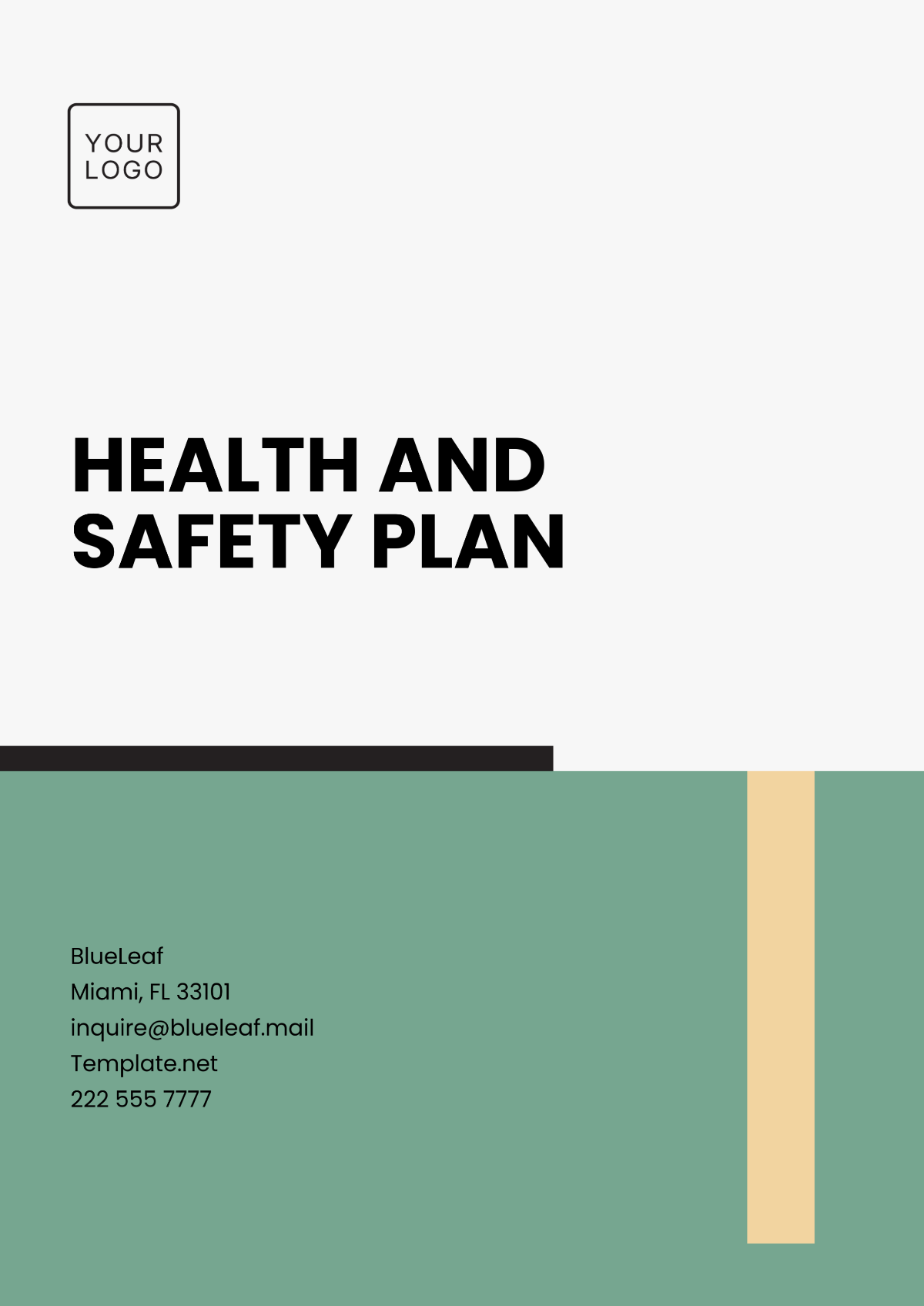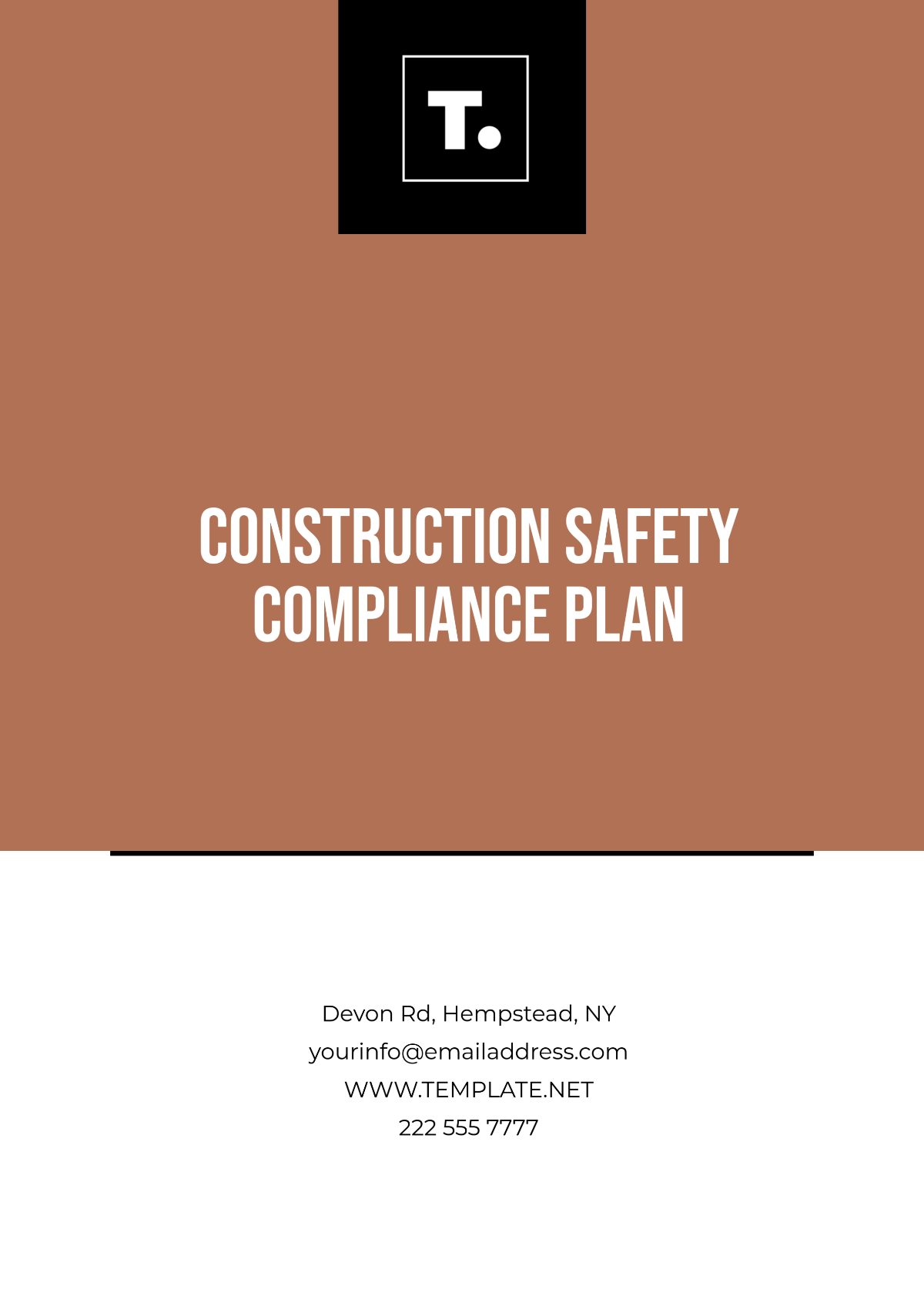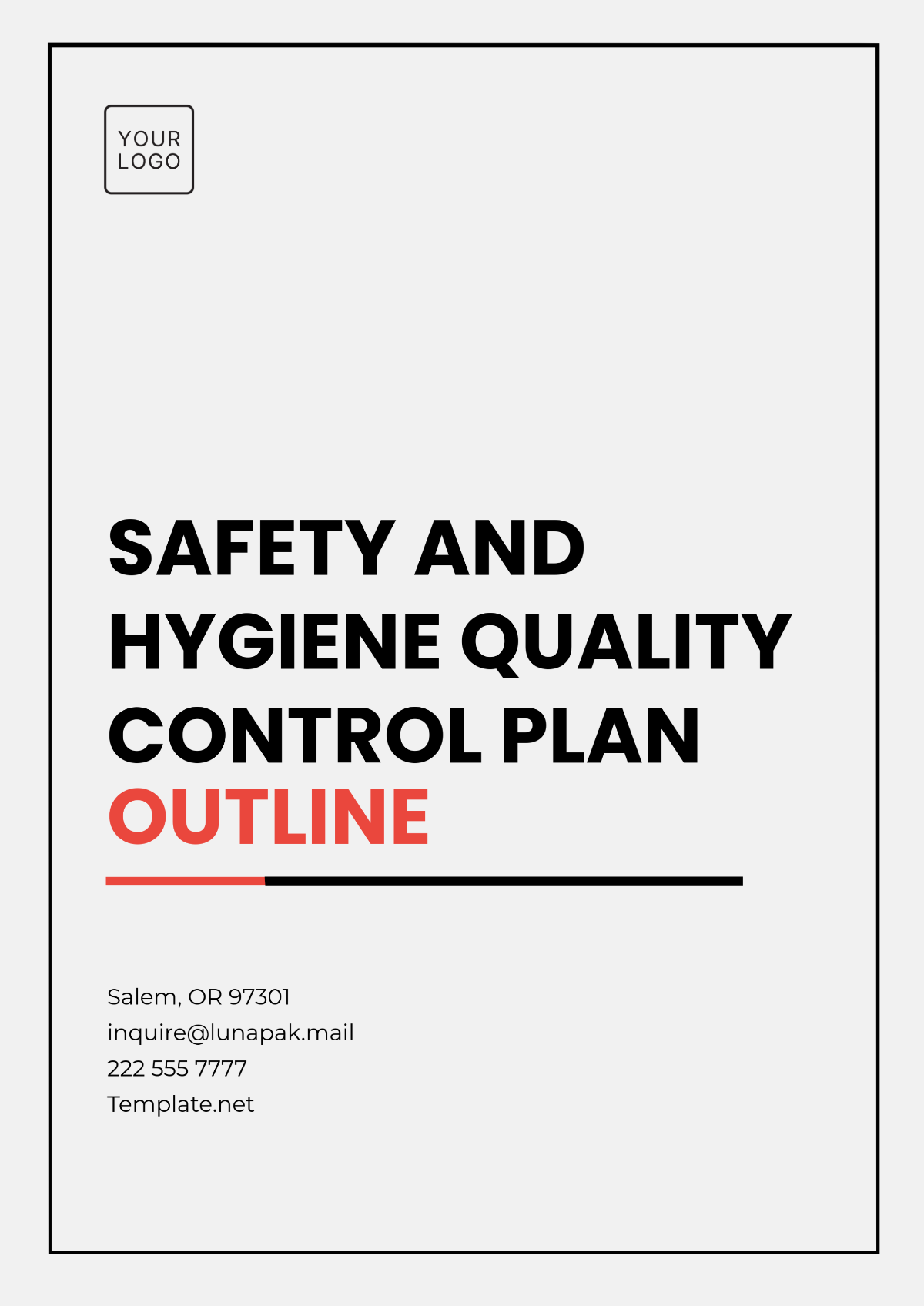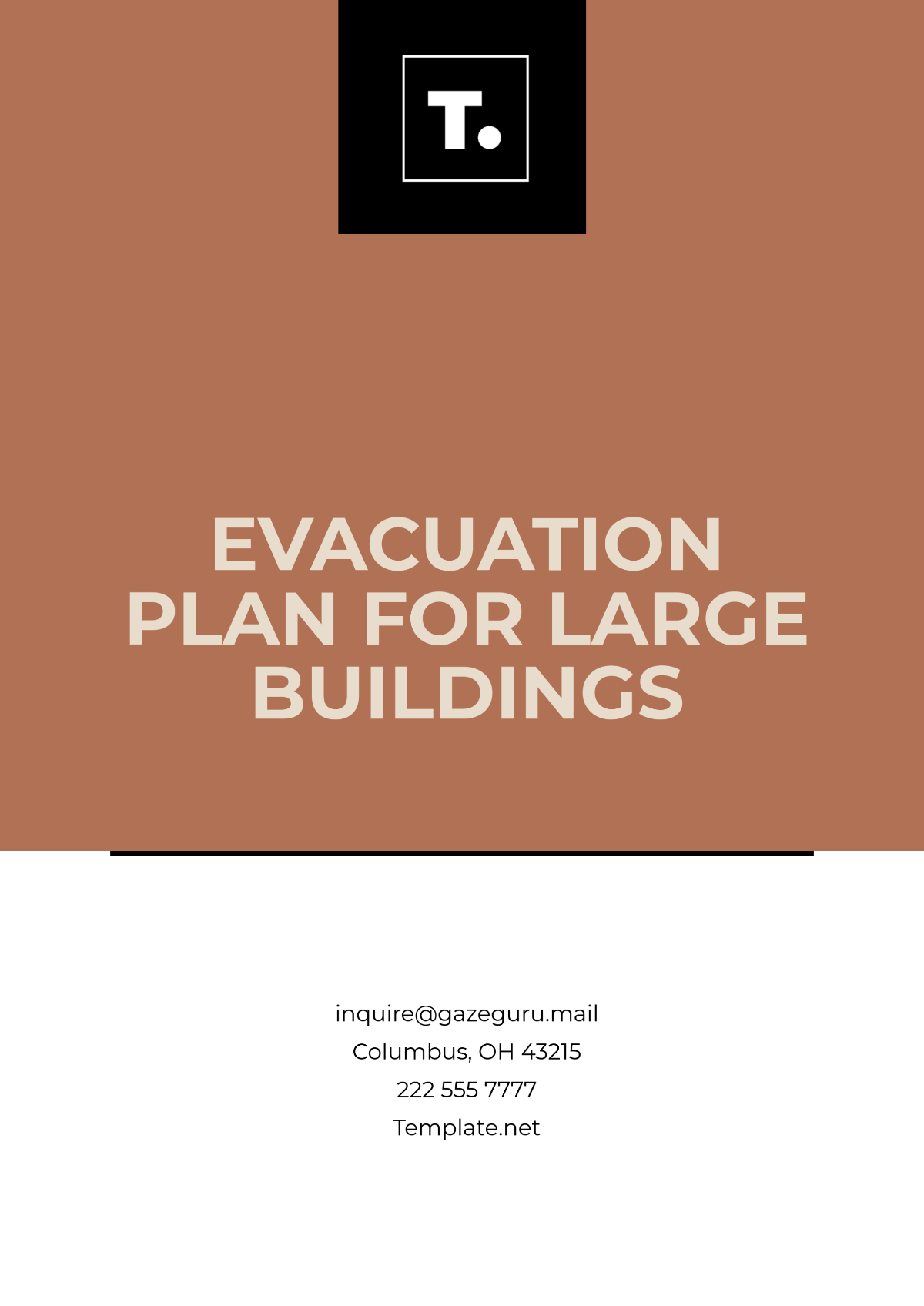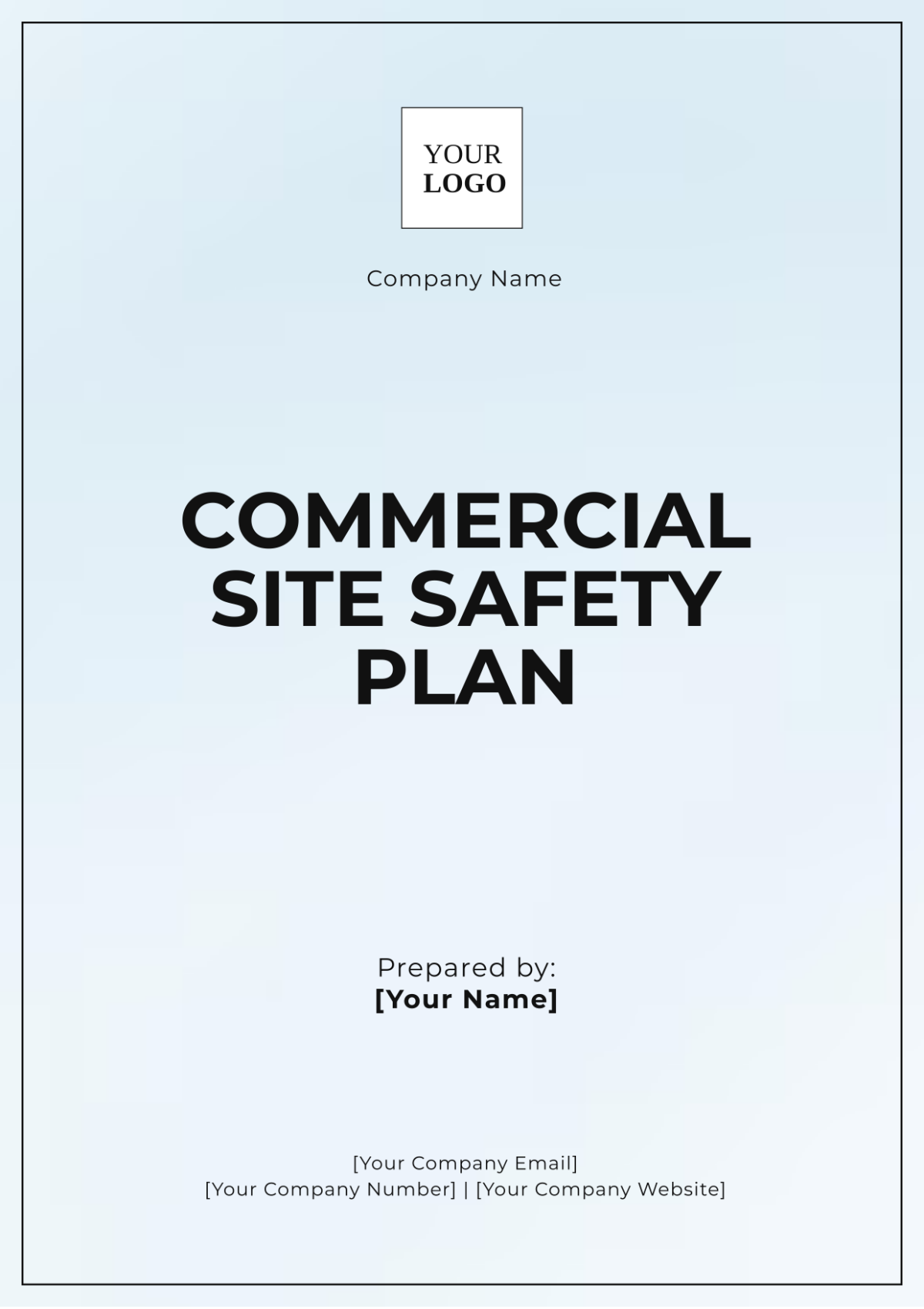Health & Safety Committee
Implementation Plan
I.Overview
As an organization committed to the well-being of our employees, we recognize the pivotal role that a Health & Safety Committee plays in fostering a safe and secure workplace. This Health & Safety Committee Implementation Plan outlines our strategic approach to establishing and operationalizing a committee dedicated to proactively addressing health and safety concerns. By implementing this plan, we aim to create a culture of safety, reduce workplace incidents, and ensure compliance with relevant health and safety regulations.
II. Purpose
The purpose of this Health & Safety Committee Implementation Plan is to provide a comprehensive framework for the formation, responsibilities, and ongoing activities of the Health & Safety Committee. This plan serves as a roadmap, guiding our organization through the systematic process of establishing a committee that actively contributes to the improvement of health and safety standards within our workplace.
III. Objectives
Our objectives in implementing this plan are clear and focused. These are the following:
Establish a Health & Safety Committee with well-defined roles and responsibilities.
Foster a proactive approach to identifying and mitigating health and safety risks.
Enhance communication channels related to health and safety matters within the organization.
Facilitate ongoing training programs to ensure committee members are well-equipped to address evolving safety challenges.
Establish evaluation mechanisms to measure the effectiveness of the committee and identify areas for improvement.
IV. Committee Formation
A. Goals
The goals of the Health & Safety Committee are aligned with our organization's commitment to creating a safe and healthy work environment. The committee will focus on hazard identification, incident reporting, safety program development, and fostering a culture of continuous improvement.
B. Committee Composition
The committee will be composed of representatives from various departments and levels within the organization, ensuring diversity in perspectives. Leadership roles will be assigned, including a Chairperson, Secretary, and additional members responsible for specific focus areas.
C. Appointment of Committee Members
The process for appointing committee members involves soliciting nominations, considering volunteers, and seeking input from department heads. Final appointments will be made based on a balance of expertise, representation, and commitment to safety.
V. Committee Responsibilities
A. Core Responsibilities
The Health & Safety Committee will be entrusted with the following core responsibilities:
Hazard Identification and Risk Assessment.
Incident Reporting and Investigation.
Safety Program Development and Implementation.
Communication of Safety Policies and Procedures.
Continuous Monitoring and Evaluation of Safety Initiatives.
B. Specific Focus Areas
Each committee member will have specific focus areas, such as Emergency Response, Training, or Regulatory Compliance, to ensure comprehensive coverage of all aspects of workplace health and safety.
Focus Area | Responsibilities |
[Emergency Response] | [Conduct regular emergency drills and simulations] |
This structured delineation of focus areas and corresponding responsibilities is paramount to the committee's success. It ensures that every facet of workplace health and safety is comprehensively addressed, leaving no critical area unattended. By assigning specific responsibilities to each focus area, we create a proactive environment where potential hazards are mitigated, incidents are thoroughly analyzed, and compliance with safety regulations is steadfastly maintained. This approach not only enhances the effectiveness of the committee but also instills confidence among employees, fostering a workplace culture where safety is a top priority. Through the collaboration of committee members in these distinct focus areas, we fortify our commitment to providing a secure and healthy working environment for all.
C. Collaboration with Other Departments
The committee will collaborate with other departments to ensure a holistic approach to health and safety. Regular communication channels will be established to share insights and coordinate efforts across the organization.
VI. Implementation Timeline and Milestones
A. Timeline
The following timeline strategically outlines the phased actions that will shape our commitment to fostering a secure workplace environment:
Phase | Action Items | Timeline |
1 | [Internal Communication Rollout] | [January 12, 2050] - [January 25, 2050] |
2 | ||
3 | ||
4 | ||
5 |
This Implementation Timeline serves as our comprehensive guide, outlining the strategic sequence of actions within our health and safety initiative. This organized approach ensures a synchronized implementation of key measures, providing a roadmap for seamless execution. The structured timeline is a strategic tool that allows for effective coordination, resource allocation, and timely execution of vital phases. It fosters a sense of direction and accountability across the organization, emphasizing the collective commitment to prioritizing health and safety. As we progress through each phase, the timeline becomes a dynamic tool for tracking progress, identifying potential challenges, and adapting our strategies for optimal results.
B. Milestone
The following milestones encapsulate the tangible achievements we strive for as we progress through our implementation plan:
Milestone | Target Date |
[Initial completion of Phase 1] | [January 18, 2050] |
The table above represents significant achievements in our pursuit of a safer workplace. These milestones are not just markers in time; they symbolize the tangible outcomes of our collective dedication to health and safety. Each milestone reached signifies progress, achievement, and a step closer to our overarching goal of fostering a secure work environment. As we celebrate these milestones, we reinforce a culture of success, instilling confidence in our ability to proactively address challenges and create an environment where every individual feels secure, supported, and valued. These reflect the commitment of the entire organization to prioritize and champion the cause of workplace health and safety.
VII. Budget and Resources
A. Budget Allocation
Transparent financial planning is fundamental to effective health and safety measures. This budget allocation table and graph below offers a comprehensive overview of the resources designated for key categories within our implementation plan:
Category | Budget Allocation |
[Training Programs] | [$150,000.00] |
By investing in training programs, technology integration, safety audits, emergency response planning, and communication strategies, we fortify our dedication to creating a secure work environment. This financial transparency not only ensures adequate funds but also underscores our commitment to prioritizing health and safety.
B. Resource Deployment
The success of our health and safety initiatives hinges on the strategic deployment of human resources. This table below outlines the roles and responsibilities of key personnel integral to the implementation plan.
Role | Responsibilities |
[Health and Safety Officer] | [Oversight of implementation plan phases] |
From overseeing plan phases to specialized teams for training, technology integration, safety audits, emergency response, and communication, this resource deployment ensures that the right individuals are part of the committee. This ensures that the members are equipped with expertise and dedication to stand poised to propel our health and safety agenda to new heights.
VIII. Communication Strategies
A. Internal Communication
Effective internal communication is the pulse of our health and safety initiatives, fostering a workplace culture where safety is a shared responsibility. To achieve this, we will implement a multifaceted approach, utilizing regular updates, newsletters, and targeted communication channels. This strategy aims to keep every team member well-informed, engaged, and aligned with the evolving health and safety landscape within the organization.
B. External Communication
Externally, transparent communication is paramount for building trust and showcasing our dedication to health and safety. Through press releases, community outreach programs, and collaborative initiatives, we aim to establish an open dialogue that reflects our conscientious approach to creating a safe and secure working environment.
IX. Monitoring and Evaluation
A. Key Performance Indicators (KPIs)
To quantitatively measure the effectiveness of our health and safety initiatives, we will establish Key Performance Indicators (KPIs). These KPIs serve as benchmarks, providing insights into the impact of our efforts and guiding informed decision-making.
B. Continuous Improvement Processes
At the heart of our approach lies a commitment to continuous improvement. Through regular reviews, feedback loops, and an adaptive mindset, we ensure that our health and safety strategies evolve in tandem with emerging needs, reinforcing our dedication to perpetual enhancement.
X. Incident Reporting System Implementation
A. Accessibility and Communication
Implementing an effective incident reporting system begins with ensuring accessibility and clear communication. Clear communication encourages employees to promptly report incidents, fostering a proactive safety culture.
B. Training on Incident Reporting
Education is key to encouraging timely and accurate incident reporting. Through targeted training sessions, employees will gain a thorough understanding of when, how, and what to report, ensuring that reporting is not only encouraged but also executed accurately.
C. Confidentiality and Non-Retaliation Assurance
To promote a culture of openness, employees must feel secure in reporting incidents. By establishing a culture of trust, we aim to remove barriers that might inhibit employees from reporting, contributing to a robust incident reporting system.
D. Incident Investigation Protocols
The aftermath of an incident involves thorough investigation. By defining investigation procedures and assigning responsibilities, we ensure that incidents are thoroughly examined, leading to the identification of root causes and the implementation of effective corrective actions.
E. Continuous Improvement in Reporting System
Incident reporting is a dynamic process that requires continuous refinement. Regular reviews, feedback collection, and adaptation of reporting procedures based on evolving needs are integral to maintaining an effective and responsive incident reporting mechanism.
XI. Emergency Response Planning
A. Comprehensive Emergency Response Plans
Developing comprehensive emergency response plans is foundational to our commitment to the safety and well-being of our workforce. From natural disasters to workplace accidents, our plans will be tailored to address specific contingencies, ensuring a coordinated and effective response.
B. Regular Drills and Simulation Exercises
Preparedness requires practice. By simulating emergency scenarios, we aim to familiarize employees with response procedures, evacuation routes, and coordination protocols. This proactive approach ensures that our teams are well-prepared to respond swiftly and decisively in real emergencies.
C. Collaboration with Local Emergency Services
Effective emergency response goes beyond internal capabilities. Building strong partnerships ensures a seamless integration of external resources during emergencies, enhancing the effectiveness of our response efforts and contributing to the overall safety of our workplace.
D. Periodic Review and Update of Plans
Emergency response plans must evolve with changing circumstances. Adaptation based on lessons learned from drills and real incidents ensure that our plans remain dynamic and effective.
E. Employee Training on Emergency Response
Preparing our workforce to respond effectively is paramount. Through targeted sessions, employees will gain the knowledge and skills required to execute response plans, contributing to a culture where everyone plays a role in ensuring a safe and secure workplace.
XII. Conclusion
In conclusion, this plan underscores our unwavering commitment to creating a workplace where the health and safety of every individual is paramount. The success of this implementation plan hinges on the collective effort and engagement of every member of our organization. It is a shared responsibility that extends from the leadership team to each individual employee. Through transparent communication, regular training, and a culture that values reporting and learning, we cultivate an environment where safety is ingrained in our daily operations and decisions. As we move forward, we recognize that the journey toward a safer workplace is an ongoing commitment that demands agility, collaboration, and a shared vision.
